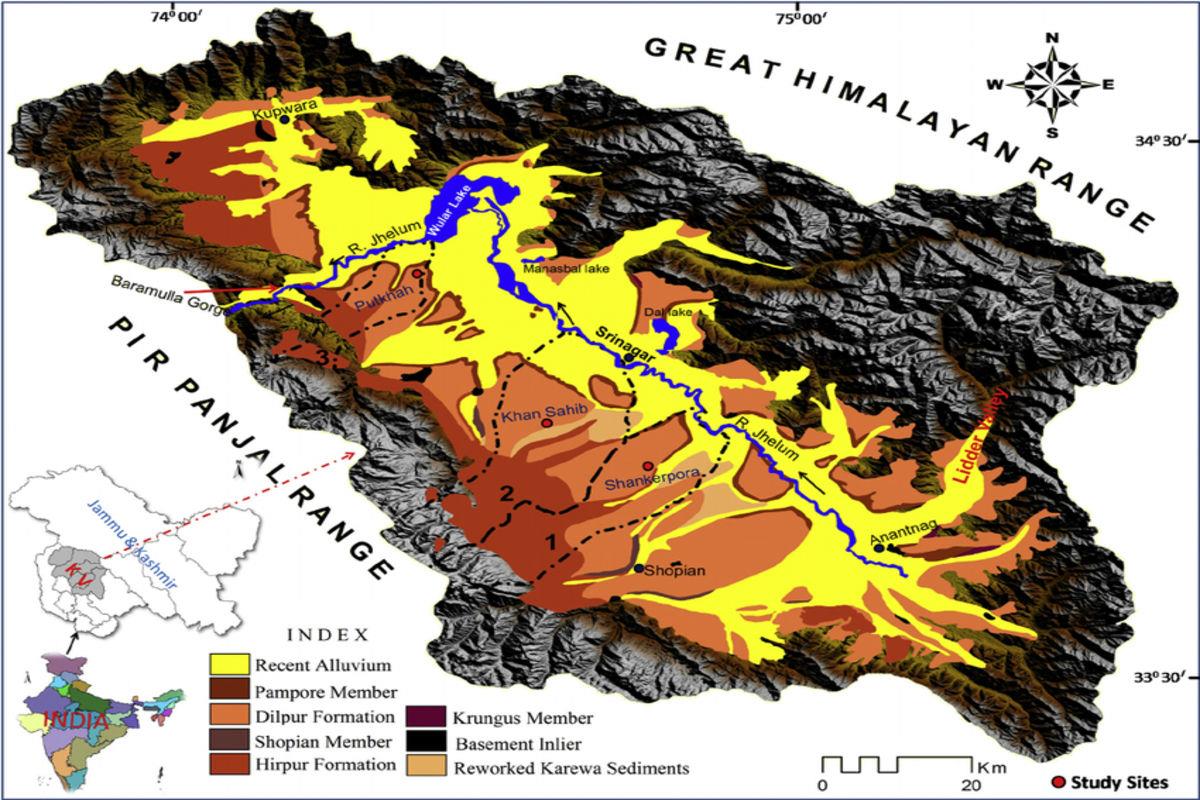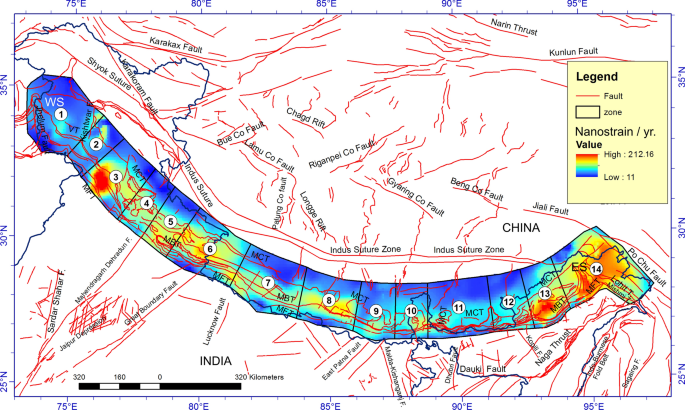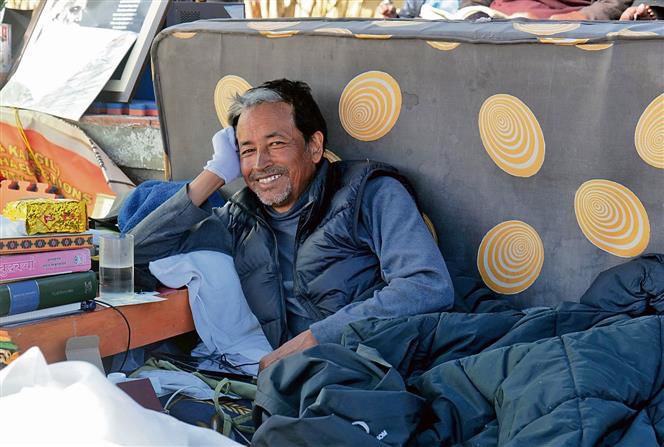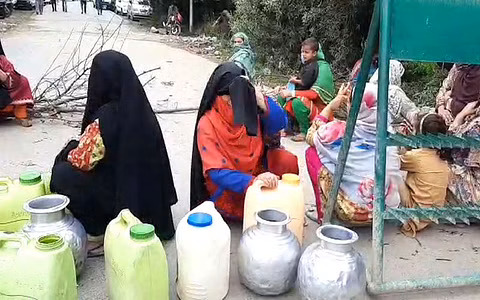The San Andreas Fault, a major dextral strike-slip fault system in United States, is probably one of the most well-known structures to mankind. Yet, the moment magnitude (Mw) 7.1 and 6.4 earthquakes that have occurred in July-2019 have caused significant damage, which is worth billions (it may go up). These earthquakes have struck portions of California and have ruptured strike slip faults (where movement is along the strike of the fault; think of rubbing your right hand on your left hand). Both these earthquakes are smaller in size compared to the expected earthquakes in Jammu and Kashmir regions.
So, here we are. California, which is one of the best places to test earthquake preparedness and compare it with what could possibly happen in Jammu and Kashmir region if we face a similar or bigger eventuality. The reports of billions of dollars’ worth of damage have already been reported from the recent earthquakes in the US. And we have mapped a number of new challenges (e.g. fires, road blockades, landslides, power cuts, water disruption etc.) that are usually associated with earthquake disasters. Time will unfold the full picture of the present crisis in US, and then we will learn what one ought to do so that such incidents are not repeated and are taken into account while drafting earthquake planning of a region.
I had a quick look onto the active fault maps of the region and plotted population density on it to understand the possible damage to life and property, and it seems the region where these earthquakes have occurred are sparsely populated, which is a good news, as one would expect low to no loss of life, provided the building have strictly followed the building code standards as are set by the US government building regulation agencies.
Let us come back to Jammu and Kashmir, and think about what will unfold if we face a medium to large magnitude earthquake in the near future. As an earthquake scientist I have mapped various earthquake hazards in the region (and written about it in Kashmir Observer) and I can tell you that we are NOT ready for even a magnitude 6.5 and above.
On a bigger picture it is true that the scientific wisdom in understanding of the earthquake geology of South and Southeast Asia is slowly increasing but more work is needed to communicate this knowledge to people. And I think this is one of the major challenges that we are facing today. And in Jammu and Kashmir this is a huge problem, and must be addressed.
I do understand and I am aware that unfortunately most of the South and Southeast Asian countries had a turbulent past, and these nations are still struggling to overcome poverty, political instability, lack of education and developmental infrastructure. Therefore, it will be difficult to compare these nations with the developed nations e.g. Japan, United States or New Zealand. The continuous occurrence of earthquakes in Japan have made this nation to accept the fact that living with earthquake hazards is a reality, and therefore, the country has become one of the most resilient countries on the planet today. Yet, the Mw 9.0 earthquake that shattered Japan in 2011 caused extensive damage because of tsunami, and this resulted in loss of 20350 people. Imagine the extent of devastation if such a large magnitude earthquake occurs in any part of the South or South East Asia (think of Kashmir).
Undoubtedly, Japan has developed infrastructure, science, technology, and more so a strong community culture to face the incoming challenges of disasters. This was possible because the country has a decent leadership, low corruption, high scientific literacy rates, and most importantly, a stable political structure. This is evident when we, for example, compare the economic condition of Argentina and Japan. Historians tell us that at the start of 20th century Argentina was one of the wealthiest countries in the word, and in 1960 its income per capita was among the top 20 in the world, and definitely better, and higher than Japan. However, this has changed dramatically in the last thirty years because of political instability and violence. The country has come closer to economic collapse. The role of political stability is again shown by the increased economic welfare of Japan, which in 1960 was much below than Iraq (look at Iraq now), Ireland, and Argentina and was not listed in the top twenty-five in the world. With a good political stability, which has acted as a solid backbone, Japan has emerged, and acquired one of the fastest economic growth rates in the world.
The countries like India, Pakistan, and Bangladesh are actively engaged in improving of the earthquake science and related outreach activities. However, because of the increasing population, poverty, coupled with political problems these nations are struggling to make an impact on round. For example the urban population in the Indian Ganges Plain, which is located closer to the Himalayan frontal fault, has increased by a factor of ten since the 1905 Kangra earthquake that struck north-west Himalaya and killed ~20,000 and destroyed 100,000 buildings. The situation today is very disturbing because more than 50 million people are now at risk from great Himalayan earthquakes. Similarly, the capital cities of Bangladesh, Myanmar, Bhutan, India, Nepal, Pakistan, Indonesia, Malaysia, and several other cities that house a million inhabitants and more are vulnerable to damaging earthquakes in future.
In the backdrop of all this, I can suggest and warn that people in Jammu and Kashmir will have to immediately work on ground, and make a strong impact by improving the old structures with new technologies to withstand medium to large magnitude earthquakes. All new structures (buildings, bridges, tunnels, etc.) ought to be earthquake resistant, and we have to make this happen, at any cost. This is about life and death, and how come we are so casual in this. Do we not remember what happened in 2005 when more than 80,000 innocent lives were lost in Muzaferabad just across the LOC? Are we so naive of this hard reality that we are unable to map and think before we start building our houses? Who can build death traps for their own children? Clock is ticking, and we must act now. .






